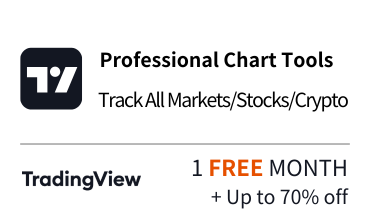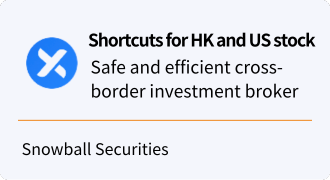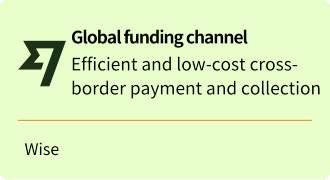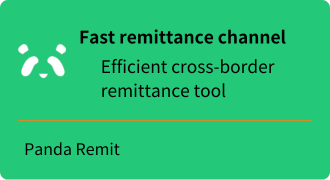5 Essential Trading Terms: The Complete US & HK Stock Market Guide
[DISCLAIMER] This article is for educational and informational purposes only and does not constitute investment advice. Readers should consult with qualified financial professionals before making any investment decisions.
Have you ever experienced buying shares in the US or Hong Kong markets only to see an immediate loss despite no significant price movement, received a margin call unexpectedly, or felt paralyzed by leveraged losses? As a quantitative trader with over a decade of experience in US and Hong Kong markets, I've seen countless newcomers stumble because they didn't understand basic terminology. Don't worry—this article will explain bid price, ask price, spread, leverage, and margin in straightforward language to help you overcome your first hurdles in US and Hong Kong stock trading.
I. Trading Terminology: The Invisible Barrier for Beginners
I still remember my first Apple stock trade—the combined impact of spread and commission nearly made my head spin. Many investors face this challenge when first entering US and Hong Kong markets: terminology is highly technical, explanations are complex, yet you can't trade effectively without understanding them. US and Hong Kong stock trading differs significantly from domestic markets, and understanding these terms directly impacts the outcome of every transaction.
According to a survey of new US and Hong Kong market traders, over 70% admitted suffering unnecessary losses in their first few months due to poor understanding of basic terminology. A friend of mine lost 90% of his account on his first Tesla options trade because he misunderstood leverage concepts. These losses are entirely preventable.
II. Bid and Ask Prices: The Two-Sided Quotes in US & HK Markets
2.1 Understanding Bid and Ask Prices
In US and Hong Kong markets, the bid price is the highest price buyers are willing to pay for a stock, while the ask price is the lowest price sellers are willing to accept. It's similar to used car dealing: buyers want the lowest price, sellers want the highest, and the final price settles somewhere in between.
Imagine trading Tesla (TSLA) stock:
- If you want to buy Tesla shares, you'll pay the ask price
- If you want to sell Tesla shares, you'll receive the bid price
Remember this rule: You always buy at the ask price and sell at the bid price. Simply put, ordinary investors are always at a slight disadvantage.
2.2 Why Two Prices? A Practical Example
Let's illustrate with a real US stock example:
Suppose Amazon (AMZN) is quoted at $180.20/$180.25
- $180.20 is the bid price: If you're selling Amazon shares, you'll get $180.20 per share
- $180.25 is the ask price: If you're buying Amazon shares, you'll pay $180.25 per share
In the Hong Kong market, it's similar. For instance, Tencent Holdings (0700.HK) might be quoted at HK$249.80/250.00, with the difference being the spread.
2.3 Common Misconceptions About Bid and Ask in US/HK Markets
The most common misconception among beginners is not understanding why they show an immediate loss after buying. The reason is simple: you buy at the ask price, but your position value is calculated at the bid price. This gap is the spread which, combined with commissions in US and Hong Kong markets, constitutes your initial trading cost.
III. Spread: The Hidden Cost in US & HK Trading
3.1 What Is Spread in US/HK Markets and How Is It Calculated?
In US and Hong Kong markets, the spread is the difference between ask and bid prices. Continuing with our Amazon example: $180.25 - $180.20 = $0.05 per share is the spread
The characteristics of spreads in these markets are closely related to stock price and liquidity:
- High-priced stocks like Amazon (AMZN) and Google (GOOGL) have larger absolute spreads
- Low-priced stocks like Ford (F) and General Electric (GE) have smaller absolute spreads
- Blue-chip stocks and ETFs like Apple (AAPL) and SPY typically have smaller relative spreads
- Small-cap stocks and low-liquidity Hong Kong shares may have larger relative spreads
3.2 Why Spread Matters in US/HK Markets: Impact on Trading Strategy
Spread directly affects your breakeven point. If you trade Amazon (AMZN):
- With a $0.05 per share spread
- Prices must rise at least $0.05 before you start profiting
- Adding commission (e.g., $0.01 per share), your true breakeven point is $0.06 per share
For day traders, this impact is especially significant. If you're a day trader making 10 trades daily, each involving 100 Amazon shares:
- Daily spread cost alone: 10 × 100 × $0.05 = $50
- Plus commissions: 10 × 100 × $0.01 = $10, total cost $60
- Monthly (20 trading days): $1,200 in trading costs
This can devour most profits from small accounts!
3.3 Spread Comparison Between US and HK Markets
US and Hong Kong market spreads have distinct characteristics:
- US large-cap stocks like Apple (AAPL) and Microsoft (MSFT) typically have relative spreads of only 0.05%-0.1%
- HK blue chips like HSBC Holdings (0005.HK) and Tencent (0700.HK) have relative spreads of about 0.1%-0.2%
- US small caps may have relative spreads of 0.5%-1%
- HK small caps and low-liquidity stocks may have relative spreads as high as 1%-3%
One of my students moved from US to Hong Kong stock trading without considering the larger spreads and different commission structures in Hong Kong. His short-term strategy that worked in US markets completely failed in Hong Kong—all potential profits were consumed by trading costs.
IV. Leverage: Wealth Accelerator or Danger Catalyst in US/HK Markets?
4.1 Leverage Fundamentals in US/HK Trading
In US and Hong Kong markets, leverage (Margin) allows you to control positions larger than your actual capital. For example, 2:1 leverage in US stocks means you can control $2 worth of stock with $1.
Leverage formula: Controlled capital = Actual capital × Leverage ratio
For instance, with $10,000 and 2:1 leverage (US standard):
- Controlled capital = $10,000 × 2 = $20,000
- This means the market only needs to move 50% against you to wipe out your account
4.2 The Dual Nature of Leverage: Case Study
Leverage in US and HK markets acts like a magnifying glass, amplifying both gains and losses.
The positive side: If you use $10,000 with 2:1 leverage to buy Tesla (TSLA), controlling $20,000 worth, and Tesla rises 10%:
- Actual gain = $20,000 × 10% = $2,000
- Account growth = 20%
The negative side: If Tesla drops 10%:
- Actual loss = $20,000 × 10% = $2,000
- Account loss = 20%
During the 2022 US tech stock crash, I knew a trader using 5:1 leverage (through combined margin and options) on Nasdaq 100 ETF (QQQ)—just one week of market decline cost him 80% of his capital. In contrast, another trader using conservative 1.5:1 leverage lost only about 15% under the same conditions and recovered quickly.
4.3 Leverage Limits in US and HK Markets
US and Hong Kong markets have different leverage restrictions:
- US standard margin accounts typically offer 2:1 leverage
- US day traders can enjoy 4:1 leverage (subject to PDT rules)
- Hong Kong markets typically offer margin ratios from 3:1 to 5:1
- US options can effectively provide higher leverage but with greater risk
- According to Reg T regulations, US initial margin requirement is 50%
It's worth noting that different US brokers also have significantly different maintenance margin requirements, which directly affects your capital efficiency and risk management strategy. Some brokers offer the industry's lowest margin requirements, such as Interactive Brokers and Snowball Securities, allowing traders to use their funds more flexibly. Choosing the right broker involves not just trading costs but overall margin efficiency, especially important for leveraged traders.
Higher leverage isn't always beneficial in US and Hong Kong trading. I always advise beginners to start with minimal leverage (like 1.5:1 or no leverage), gradually increasing with experience. Remember, in these markets, trading sustainability is more important than quick profits.
V. Margin: The Safety Net in US & HK Trading
5.1 Margin Concepts and Types in US/HK Markets
In US and Hong Kong trading, margin is the capital investors must deposit to open and maintain leveraged positions. There are two main types of margin in these markets:
- Initial Margin: Minimum funds needed to open a leveraged position
- Maintenance Margin: Minimum funds required to keep an open position
For US stocks, per Reg T regulations, the initial margin requirement is 50%:
- To control $10,000 worth of stock, you need to deposit $5,000 as initial margin
- This $5,000 is "locked" and unavailable for other trades
5.2 Margin Level and Margin Calls in US/HK Markets
Margin level is the ratio of account equity to used margin:
Margin Level = (Account Equity / Used Margin) × 100%
For example:
- Account equity: $15,000
- Used margin: $10,000
- Margin level = ($15,000 / $10,000) × 100% = 150%
US brokers typically set maintenance margin requirements at 25% (FINRA's minimum standard), while Hong Kong may range between 30%-50%.
- When margin level falls below the maintenance margin requirement, you'll receive a margin call
- If funds aren't promptly added, brokers may forcibly close some or all positions
5.3 Case Study: How Margin Protects (or Punishes) US/HK Traders
Assume you have a $20,000 account and use 4:1 leverage to buy 10,000 shares of Ford Motor (F) stock at $20 per share, for a total value of $200,000:
- Initial margin requirement: 200,000 × 50% = $100,000
- Since you only have $20,000, you can only buy 4,000 shares, worth $80,000 (maximum 4x leverage for intraday, maximum 2x leverage for overnight)
- Initial margin level: (20,000 / 80,000) × 100% = 25%
What happens to your account if Ford's stock price drops?
- 10% drop: $8,000 loss, account equity becomes $12,000
- New stock value: $72,000
- New margin level: (12,000 / 72,000) × 100% = 16.67%, below the maintenance margin level, the broker will issue an alarm signal or force liquidation.
- 20% drop: $16,000 loss, account equity becomes $4,000
- New stock value: $64,000
- New margin level: (4,000 / 64,000) × 100% = 6.25%, seriously below the maintenance margin level, the broker will issue an alarm signal or force liquidation.
- Drop more than 20%: may trigger forced liquidation
In reality, most US and Hong Kong traders fail not because they incorrectly predict market direction, but due to inappropriate leverage use and insufficient margin management leading to forced liquidation during market fluctuations.
VI. The Interplay of the Five Terms in US/HK Trading: Building a Complete Trading Perspective
6.1 Relationships Between Terms in US/HK Markets
These five core terms are closely interconnected in US and Hong Kong trading, collectively shaping your trading experience:
- Bid and ask prices determine your spread
- Spread directly affects trading costs and breakeven points
- Leverage determines your margin requirements
- Margin levels determine account safety
Think of it like a car:
- Bid and ask prices are the steering wheel, determining your direction
- Spread is the toll booth—you pay regardless of where you're going
- Leverage is the engine horsepower, providing speed but increasing risk
- Margin is the seatbelt and airbags, protecting you in dangerous moments
6.2 Comprehensive US Market Case Analysis
Let's see how these terms work together through a complete US stock trading example:
Mr. Zhang has a $50,000 account and wants to trade Microsoft (MSFT) stock:
- Current quote: $355.20/$355.25 (bid/ask)
- Spread: $0.05 per share
- Leverage used: 2:1
- Trading size: 500 Microsoft shares
6.3 Analysis Process:
Margin analysis:
- Total trade value: 500 × $355.25 = $177,625
- Initial margin requirement: $177,625 × 50% = $88,812.5
- Since Mr. Zhang only has $50,000, he can buy at most about 280 shares
- Assuming he adjusts to buying 280 shares, initial margin requirement is about $49,735
- Initial margin level: ($50,000 / $49,735) × 100% = 101%
Spread cost:
- Spread cost: 280 × $0.05 = $14
- Plus assumed commission ($0.01 per share): 280 × $0.01 = $2.8
- The trade starts with a $16.8 "hidden cost"
Breakeven point:
- Microsoft stock must rise at least $0.06 per share to start profiting
Risk assessment:
- Assuming a 5% stop-loss
- Maximum potential loss: 280 × $355.25 × 5% = $4,973.5 (about 10% of account)
- A 20% drop in Microsoft would trigger maintenance margin level
Scenario simulation:
- Best case: Microsoft rises 10%, profit about $9,947 (20% account growth)
- Worst case: Stop-loss triggers, losing about $4,974 (10% account reduction)
VII. Common Misconceptions About US/HK Trading Terms
7.1 Misconception #1: Focusing on Bid/Ask While Ignoring Total Trading Costs
Many US and Hong Kong market beginners focus only on stock price direction, neglecting the impact of spread, commission, and exchange rate fluctuations (for Hong Kong stocks). These costs are especially important in short-term trading.
Solution:
- Compare different brokers' commission structures and minimum charges
- Include spread and commission costs in your trading plan
- Understand liquidity variations across different market sessions (US pre/post-market, Hong Kong lunch break have lower liquidity)
7.2 Misconception #2: Misunderstanding the Nature of Leverage in US/HK Markets
Many beginners think US and Hong Kong market leverage equals high risk, so they either completely avoid leverage or abuse it excessively. In reality, leverage itself doesn't increase risk—risk comes from position size and holding time.
Solution:
- Beginners should start without leverage, gradually learning margin trading
- Even with 2:1 leverage, you can control the percentage of funds used per trade
- Understand how US T+2 settlement and PDT rules affect leverage usage
7.3 Misconception #3: Neglecting Margin Management in US/HK Trading
Many beginners blindly increase positions when their account has high margin levels, facing margin calls once markets fluctuate.
Solution:
- Maintain at least 50% additional margin buffer
- US accounts should pay special attention to PDT rule restrictions (day trading limits for accounts under $25,000)
- Regularly monitor margin levels, especially when holding volatile tech stocks
VIII. Applying This Knowledge to Optimize Your US/HK Trading Strategy
8.1 Choose the Right US/HK Trading Platform
Different brokers offer varying commission structures, leverage, and margin requirements. If you're a day trader, prioritize low commissions; if you're a long-term investor, you might focus more on research tools and execution quality.
- US traders might consider TD Ameritrade, Interactive Brokers
- Chinese traders might look at Interactive Brokers, Snowball Securities, Tiger Brokers
- Global traders might explore Interactive Brokers, eToro
8.2 Develop Appropriate Position Sizing for US/HK Markets
Professional US and Hong Kong traders typically follow these risk management principles:
- Risk no more than 1-2% of account per trade
- Keep total risk exposure in related industries under 20%
- Beginners should avoid leverage, focusing on capital preservation
US/HK position size calculation formula:
\(Position size (Number Of Shares) = \frac{ {\normalsize Account Balance} \times {\normalsize Risk Percentage}}{ {\normalsize Stock Price} \times {\normalsize Stop Loss Percentage}}\)
8.3 Adjust Strategies Based on US vs. HK Market Characteristics
US and Hong Kong markets have different characteristics:
- US markets: High liquidity, extended trading hours (pre/post market), developed options market
- Hong Kong markets: Some Chinese concept stocks have lower liquidity, shorter trading hours, leveraged financing more common
One successful student trades in both US and Hong Kong markets but uses different risk parameters for each:
- US stocks: No leverage for stock trading, uses options to control risk, 1% risk/trade
- Hong Kong stocks: Cautious 2:1 leverage, strict stop-loss, 0.5% risk/trade
8.4 Utilize Tools for US/HK Risk Monitoring
Modern US and Hong Kong trading platforms offer various tools to help manage risk:
- Real-time margin monitoring and alerts
- Multi-level stop-losses (traditional stop-loss, trailing stop)
- Portfolio analysis tools
- Volatility scanners
The 2025 US and Hong Kong trading environment will be more volatile, making risk management more important than ever. Integrate these tools into your trading process.
IX. US & HK Trading Environment Changes in 2025 and How to Adapt
Looking ahead to 2025, several important changes are occurring in US and Hong Kong trading environments:
-
Zero commission proliferation: Zero commission is now standard in US markets, and Hong Kong is also reducing trading costs, but beware of hidden costs like PFOF (Payment for Order Flow) and exchange rate spreads.
-
Regulatory changes: The US SEC is strengthening protections for retail traders, potentially affecting leverage and options trading rules; Hong Kong regulations are also evolving, especially regarding short selling and margin trading.
-
AI trading tool proliferation: Algorithms and AI tools increasingly influence US and Hong Kong market microstructure, presenting both challenges and opportunities for retail traders.
-
Increased cross-market arbitrage: More arbitrage opportunities between markets where the same company is listed (e.g., US ADRs vs. Hong Kong shares), but also increasing risk management complexity.
Strategies to adapt to these changes:
- Focus more on execution quality rather than just nominal commission
- Learn to use more sophisticated risk management tools, especially volatility management
- Consider diversifying across US and Hong Kong markets to reduce single-market risk
- Continuously learn new tools and strategies to adapt to evolving market environments
X. From Terminology to Market: Understanding Different US & HK Market Participants
After understanding core trading terminology, the next step is learning about various participants in US and Hong Kong markets. Each term has different applications among different market players:
- Retail traders: Account for about 10-15% of trading volume in US and Hong Kong markets, more sensitive to spread and commission, typically limited by capital and information
- Institutional investors: Including mutual funds, pension funds, and hedge funds, dominate US and Hong Kong markets (about 70% of trading volume)
- Market makers: Particularly important in US markets, earn from spreads by providing two-way quotes, ensuring market liquidity
- High-frequency traders: Active in US markets, utilizing microsecond-level speed advantages and complex algorithms for ultra-short-term trading
- Broker proprietary trading desks: Especially in Hong Kong markets, large brokers often have proprietary trading departments
- Regulatory bodies: US SEC and FINRA, Hong Kong SFC regulate markets, affecting trading rules and margin requirements
In my next article, I'll analyze these US and Hong Kong market participants' characteristics, strategies, and how they influence stock price movements. We'll explore how to understand and predict their behaviors to optimize your trading strategy.
XI. Mastering US & HK Trading Terminology: From Theory to Practice
Mastering these five core US and Hong Kong trading terms is just the beginning. True trading professionals not only understand these concepts but seamlessly integrate them into daily trading decisions.
Remember these key points:
- Bid and ask prices: Understand two-way quotes in US and Hong Kong markets, always know your actual trading costs
- Spread: View spread as a fixed cost, especially important when trading low-priced or small-cap stocks
- Leverage: Use leverage cautiously in US and Hong Kong markets, starting with low leverage and learning gradually
- Margin: Maintain healthy margin levels, paying special attention to US-specific PDT rules
- Integrated application: These concepts are interconnected, forming a complete trading framework
How's your understanding of these US and Hong Kong trading terms now? Which concept do you find most challenging? Feel free to share your questions and experiences in the comments—I'll try to answer every question.
If you still find any concept difficult to understand, please let me know, and I'll explain further in the next article about US and Hong Kong market participants. Remember, understanding US and Hong Kong trading language is the first step to becoming a successful trader, and mastering these core terms will help you avoid common pitfalls and build a foundation for long-term success.







